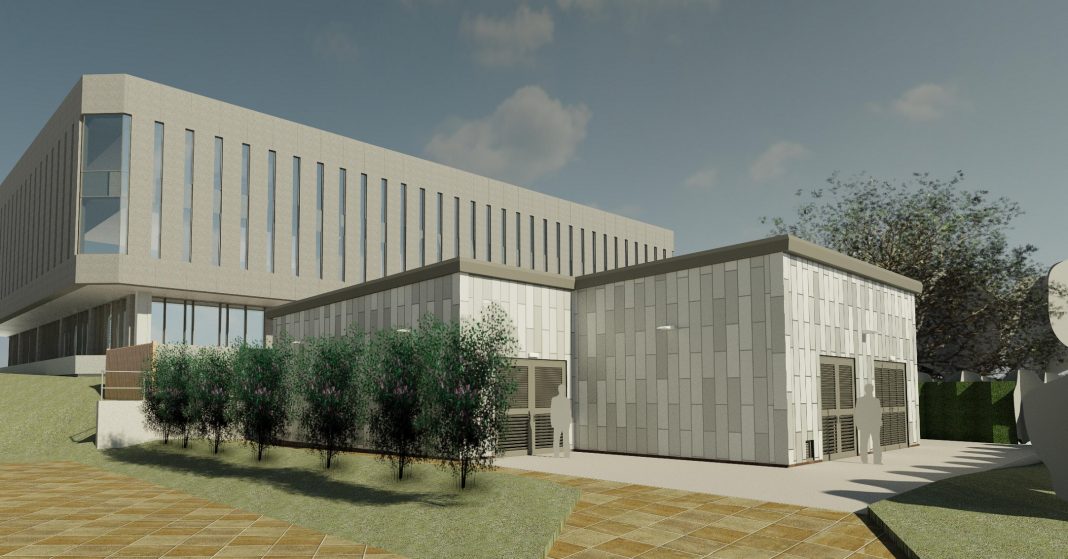A new aquifer-fed open loop heat pump-based energy centre has been designed to offer the University of Nottingham an effective route to decarbonising its campus with an initial focus on the Law and Social Sciences Building and the Hallward Library.
Silcock Leedham Group, an RSK company, has worked on the project with WM Saunders, the project’s lead designers. The Law and Social Sciences Building and Hallward Library, which officially opened in 1960 and 1973, respectively, are currently connected to a gas-fired district heating system commissioned in 1954 to heat the campus. The buildings are to be removed from the network as part of the university’s decarbonisation strategy, and an alternative, sustainable heating and cooling system will be introduced. Work on-site is expected to begin in July 2024 and will include building the water source heat pump infrastructure on campus.
Once complete, the new infrastructure is estimated to save around 500 tonnes of CO₂ per annum, according to engineers at Silcock Leedham Group. This is the equivalent of 250 return flights from London to New York or enough CO₂ to fill 500 hot air balloons.
Silcock Leedham Group Associate Sean Kitchingman said: “Finding a substantive viable alternative to the current heating system that meets the university’s carbon management plan was a challenge. These are big buildings that were built to older building construction standards and regulations when energy preservation and reducing carbon emissions were not a priority – we needed to find a system that offered sufficient low-carbon heat to maintain internal building temperatures required for learning and comfort and to maximise energy efficiency at the same time. A conversation between the Silcock Leedham Group team and Carbon Zero Consulting led to the mixed open loop water source heat pump energy centre and air source heat pump type solution that the university has opted to install.
“To make this possible, the systems will use the abundant groundwater and atmospheric air renewable energy sources to supply the heat pump-based systems. The groundwater will be sourced from the Sherwood Sandstone aquifer, which flows directly below the campus. Once installed, these systems will be low carbon, using the heat energy contained within the surrounding air and groundwater to provide heating and cooling to the buildings at scale.”



